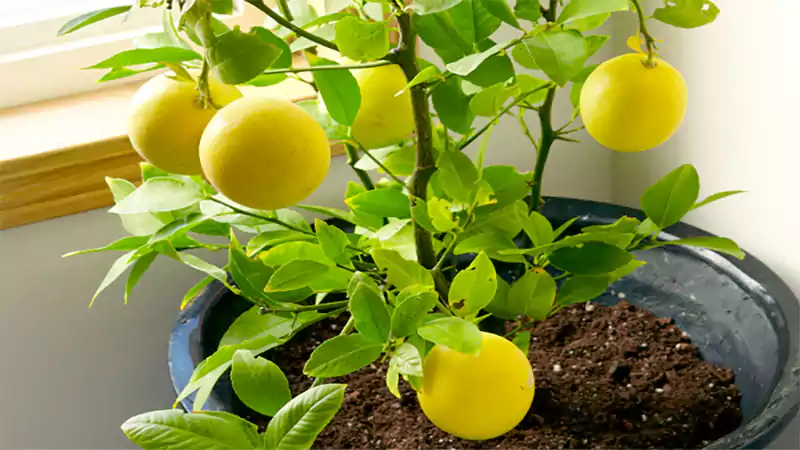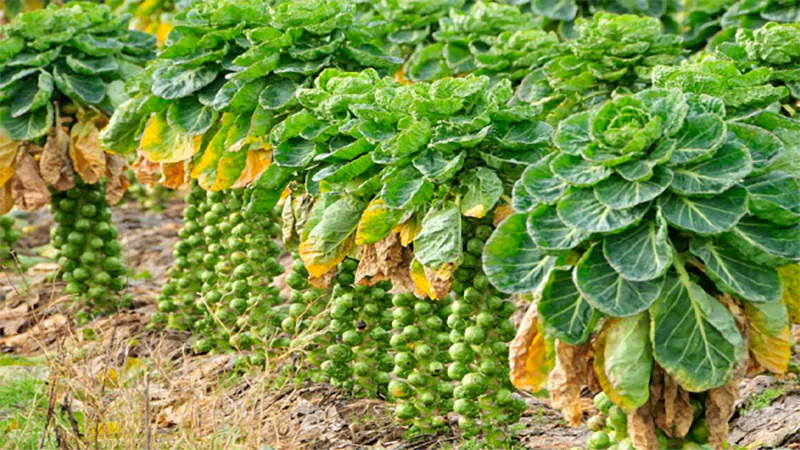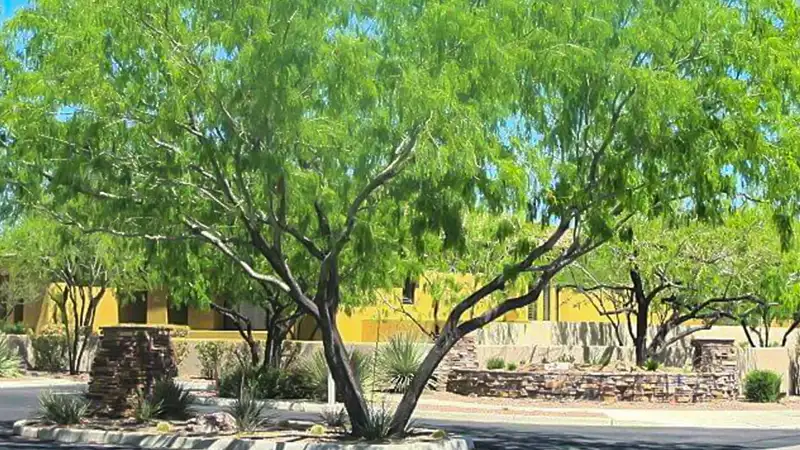
Mesquite Tree is a symbol of strength, survival, and resilience. Members of the legume family, Mesquite trees, are found in warm and dry land. They are mostly grown in North America, South America, Northern Africa, and Eastern Asia. After living in harsh conditions, these species have mastered survival in their habitat.
They may go unnoticed today, but these trees were of great importance in the wild and were also cherished by Native Americans for their valuable contribution. If you live in an arid region, these trees can be of great use to you. So, let’s find out more about this unique plant in this article.
Significance of Mesquite Tree
Mesquite trees are magical species with great medicinal properties and utility benefits. Every part of a Mesquite tree is used to serve different purposes. Here are some of the significance of this tree in a terrestrial habitat!
- The tree produces clear sap, which is used for treating stomach aches, and its black sap after mixing with some herbs is used to treat baldness in men.
- It’s a drought-tolerant tree and its roots are so strong that it prevents soil erosion and landslides. The roots are also used as firewood and chewed by people to cure toothaches.
- The seed pods of the tree have been consumed by both humans and animals for the past many years, as they have a sweet taste and are rich in nutrients, fiber, and protein. These seed pods come in handy to control blood sugar levels, and people ground seed pods and mix them with flour to make a variety of nutritious things.
- The flowers on the tree not only add to its beauty but also attract pollinators like butterflies, bees, etc. Furthermore, its flowers are also used in tea and can be stored for future use.
Mesquite trees have remarkable properties from medicinal benefits to drought-tolerant ability. It’s fascinating to see how nature’s creation can offer so much to both humans and the environment.
Different Kinds of Mesquite Trees
Mesquite trees are a common plant type found in arid regions. Its species can survive in harsh conditions, that’s why they have become almost immune to drought. There are more than 40 species of Mesquite trees present in parts of America and Africa, but the most common of them all are discussed below.
Velvet Mesquite
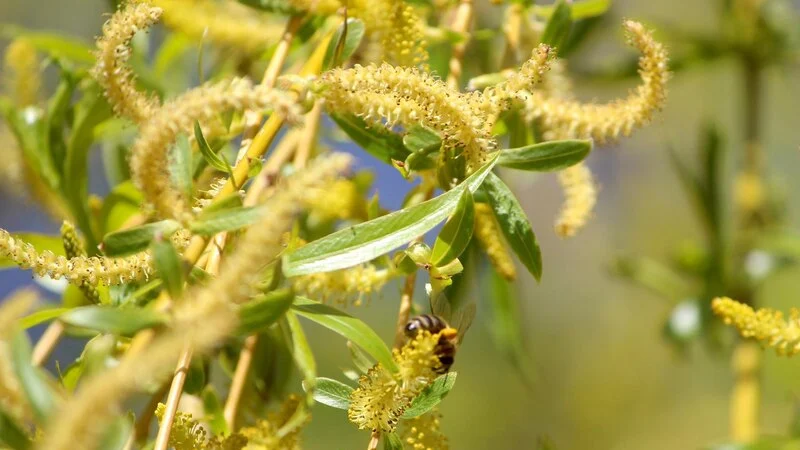
| Scientific Name: | Prosopis Velutina Wood |
| Height & Width: | 30 feet tall & 40 feet wide |
| Habitat: | Deserts and grasslands |
| Thorns: | 3 inches long |
| Blooming Time: | May – June |
| Flowers: | Pale yellow |
Found in Southern Arizona, Velvet Mesquite is known by its name because of the hair-like velvet texture on its bark. These trees thrive in dry climate conditions and sprout pale greenish to yellow leaves.
They stretch out up to 30 feet (9.14 m), spreading over 40 feet (12.19 m) or beyond. With shabby, dense appearances and droopy brown branches, these species have thorny stems that shoot up to 3 inches (7.62 cm). Velvet Mesquite is dry climate-friendly, thriving in harsh climate conditions, where most trees struggle to grow.
Honey Mesquite
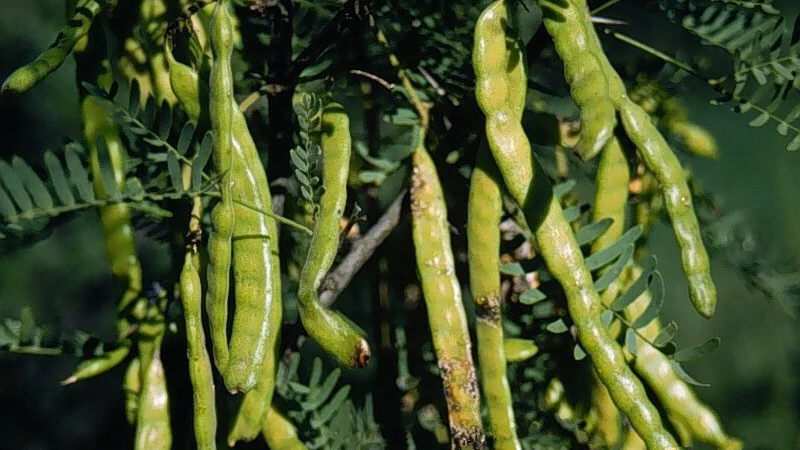
| Scientific Name: | Prosopis Glandulosa |
| Height & Width: | 25 feet tall & 15 feet wide |
| Habitat: | Dry and deserted land |
| Thorns: | 2 inches long |
| Blooming Time: | April – August |
| Flowers: | Yellow-green |
Originated from Southern USA and Northern Mexico, these trees sprout the sweetest beans of all. Standing tall at 25 feet (7.62 m) and a minimum spread of 15 feet (4.57 meters), Honey Mesquite trees have a rough texture with thorns on them.
Like its species members, they can also survive in dry regions due to a strong root system which enables them to spread and extract water deep underground.
Screwbean Mesquite
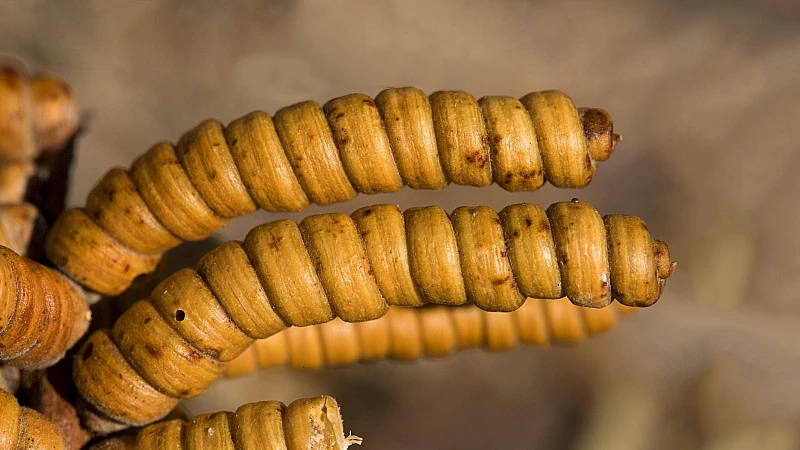
| Scientific Name: | Prosopis Pubescens |
| Height & Width: | 25 feet tall & 20 feet wide |
| Habitat: | Desert and alluvial area |
| Thorns: | 3 – 4 inches long, usually in pairs |
| Blooming Time: | February – September |
| Flowers: | White-yellow |
Screwbean Mesquite native to South America and Northern Mexico derives its name from the screw-shaped beans that grow on it. It’s a 25-foot-tall tree. With a spread of 20 feet (6.1 m), their stems are covered in sharp and tiny thorns. Unlike other Mesquites, Screwbean is shorter and less dense in nature.
In addition, it also fixes atmospheric nitrogen, making the surrounding soil more fertile and healthier for the growth of other plants.
Characteristics of Mesquite Tree
Mesquite trees have unique features and adaptability and are of great significance in the ecosystem. From their beauty to their drought tolerance ability, let’s find out some more interesting facts about them:
1. Flowers
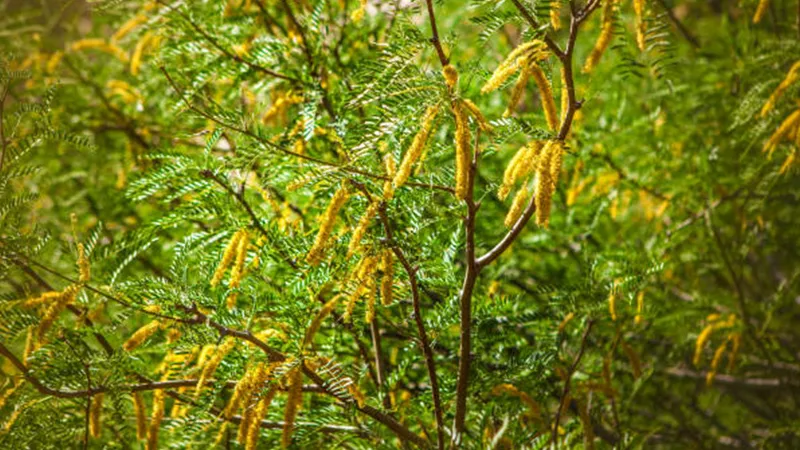
Mesquite trees in spring and summer can be seen loaded with pale yellowish to pink-purplish flowers, the colour change is an indication of changing seasons. Not only do the flowers enhance the beauty of the trees, but they also attract pollinators like bees and butterflies.
The perfect flowers on a Mesquite tree represent that it has both male and female parts. In its initial stage, the plant may not bloom, but once it matures, you’ll see it fully loaded with beautiful flowers of different shades.
2. Drought Tolerance
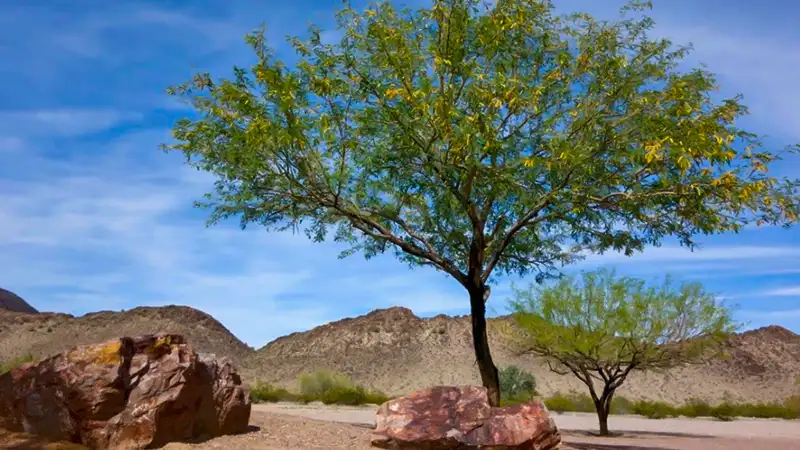
Mesquite trees are immune to drought because of their robust root systems. Over time, they have evolved to protect themselves and survive in such harsh conditions. If required, they may shed their leaves to save up energy. Their roots play a remarkable role in preserving nature by preventing soil erosion, and landslides. These trees can be planted in critical areas to take precautions for such natural calamities.
3. Size
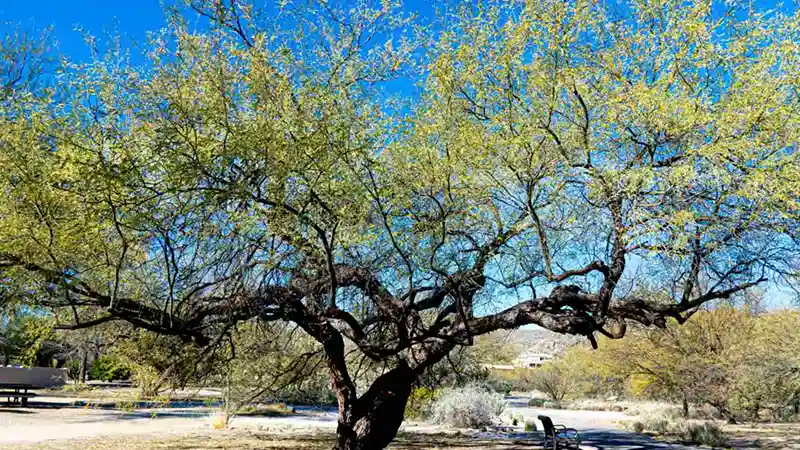
The size of the Mesquite depends on various factors like area, climate, and irrigation. They can grow up to 40 feet (12.19 m) and spread up to 50 feet (15.24 m) if they get a decent amount of water, a large area to spread, and suitable climatic conditions. The tall and vastly spread tree can provide shade, a huge amount of seed pods, and blooming flowers.
Avoid planting these trees in small areas, as they can lead to overcrowding and congestion. Furthermore, lack of water and shallow soil may not let it grow to its full potential, resulting in small plants or shrubs.
4. Seed Pods
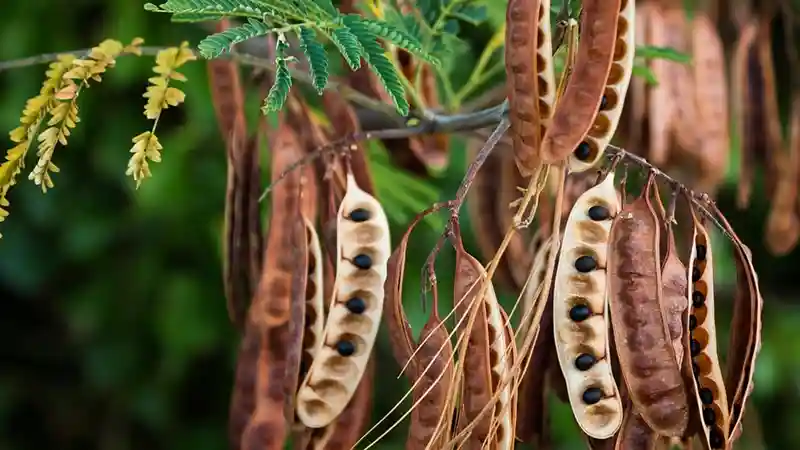
Mesquite trees can grow a large number of seed pods, which are rich in nutrients, fibers, and proteins. Due to their quantity and quality, they have been utilized by both humans and pods, other living creatures, for the past several years. They help regulate blood sugar levels; that’s why Native Americans used seed pods by grinding them into flour and baking them into different foodstuffs.
5. Nitrogen
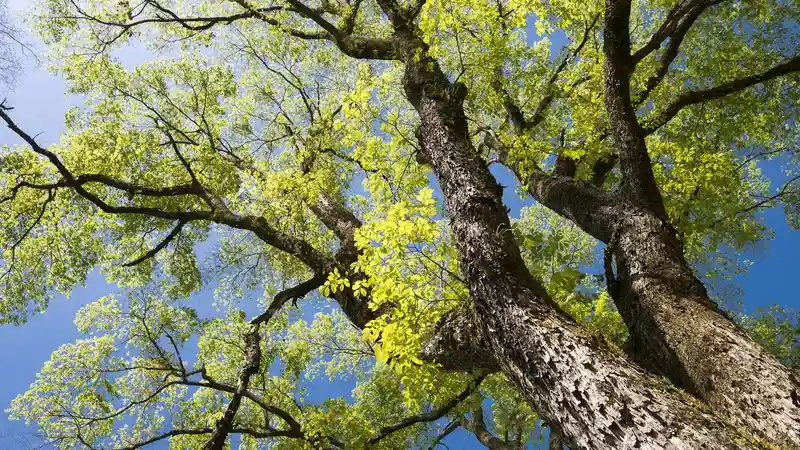
Mesquite trees work with a specific type of bacteria to add nitrogen to the soil. Due to this property, they contribute to a sustainable and well-balanced ecosystem. The increase of nitrogen content in soil can lead to the growth of more healthy plants, which can lead to a lively and fresh environment.
6. Thorns
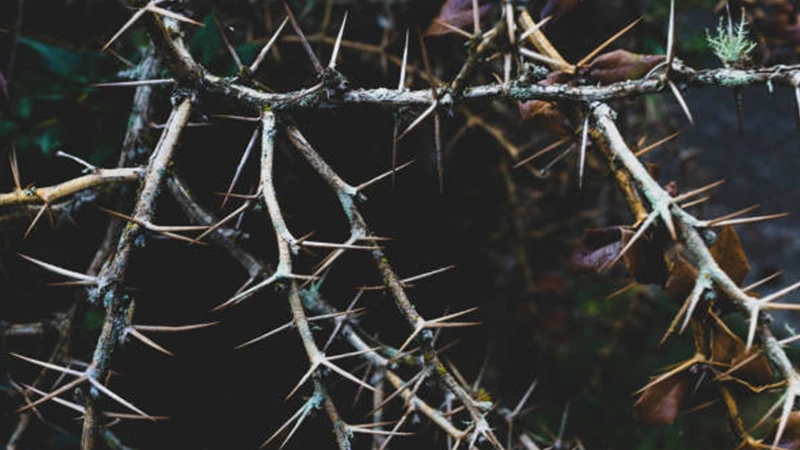
Mesquite tree thorns vary from ¾ inches to 3 inches (7.62 cm) long. It’s their thorny nature that protects them from any danger. One must be cautious near the Mesquite tree as thorns can be painful and hazardous, leading to injury.
Wear gloves and take the utmost precaution while climbing, as it can be hurtful if you step on thorns. There are also a few exceptions available regarding thorns, which means that you can get thornless Mesquite plants too.
7. Roots
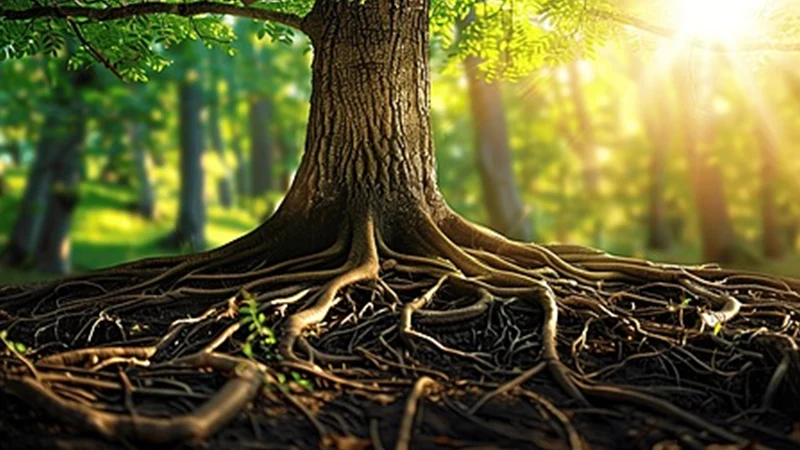
Mesquite tree roots can drill deep down into the ground for water. The root system of these trees helps prevent soil erosion, and landslides and is almost drought tolerant.
They also have the nickname “devil tree” because their roots, compete with other plants for water and can even break through underground pipes due to their strength. This aggressive root system helps them to survive in arid regions.
Pros and Cons of Mesquite Trees
Here’s a quick sneak peek into the pros and cons of planting a Mesquite Tree!
Are Mesquite Trees Worth Planting?
Indeed Mesquite trees are unique species and various parts of the tree offer a wide range of uses and utility benefits. However, Mesquite trees’ requirements depend on various factors like type of land, climatic conditions, and irrigation. Although their seed pods can be a little problematic to clean, if taken care of properly, you can never go wrong with a Mesquite tree. If you have enough space in your backyard, you can easily grow a mesquite tree there.
Once you plant a Mesquite tree, be careful around it because of its thorns, and also be prepared to collect plenty of seed pots from your backyard. They are low-maintenance species and natural survivors. A dry, arid, and drought-prone region is perfect for mesquite growth. With their capability to hold onto soil and protect us from landslides and soil erosion, they can be planted to prevent such calamities.
If you are looking for something that doesn’t require much care and attention, Mesquite Tree is a good pick for you. So go ahead and get yourself a Mesquite plant. Happy planting!
Are Mesquite trees suitable for home gardening?
Mesquite trees are a suitable pick for home gardening if you have enough space in your garden. They don’t need much planting knowledge and effort, so you won’t have to look after them a lot. Remember that the tree size may differ depending on area, irrigation, and climate.
Are Mesquite tree seed pods edible?
Yes, mesquite tree seed pods have been consumed by both humans and animals for a long time. They are sweet and can be used to control blood sugar levels in humans.
What areas are suitable for the cultivation of mesquite trees?
Mesquite trees are usually cultivated in dry and arid regions. The majority of Mesquite trees are found in areas of North America, South America, Northern Africa, and Eastern Asia.
When does the Mesquite tree bloom?
Mesquite trees bloom in summer till spring. The blooming season starts in April and lasts till July.
Does the Mesquite tree have medicinal properties?
Yes, the Mesquite tree does have some medicinal properties.
- Its clear sap is used to treat stomach aches.
- The black sap is used to treat baldness in men.
- The black sap after boiling and diluting is used to treat wounds, chapped lips, sunburn, and venereal diseases.
- The roots of the tree are used to treat toothaches.
Are Mesquite trees drought-resistant?
Yes, due to their root system, Mesquite trees are drought tolerant and can survive in dry regions easily.
What is the quality of Mesquite tree’s wood?
Mesquite trees have excellent quality wood. The wood is used as firewood, fencing, and corals.

